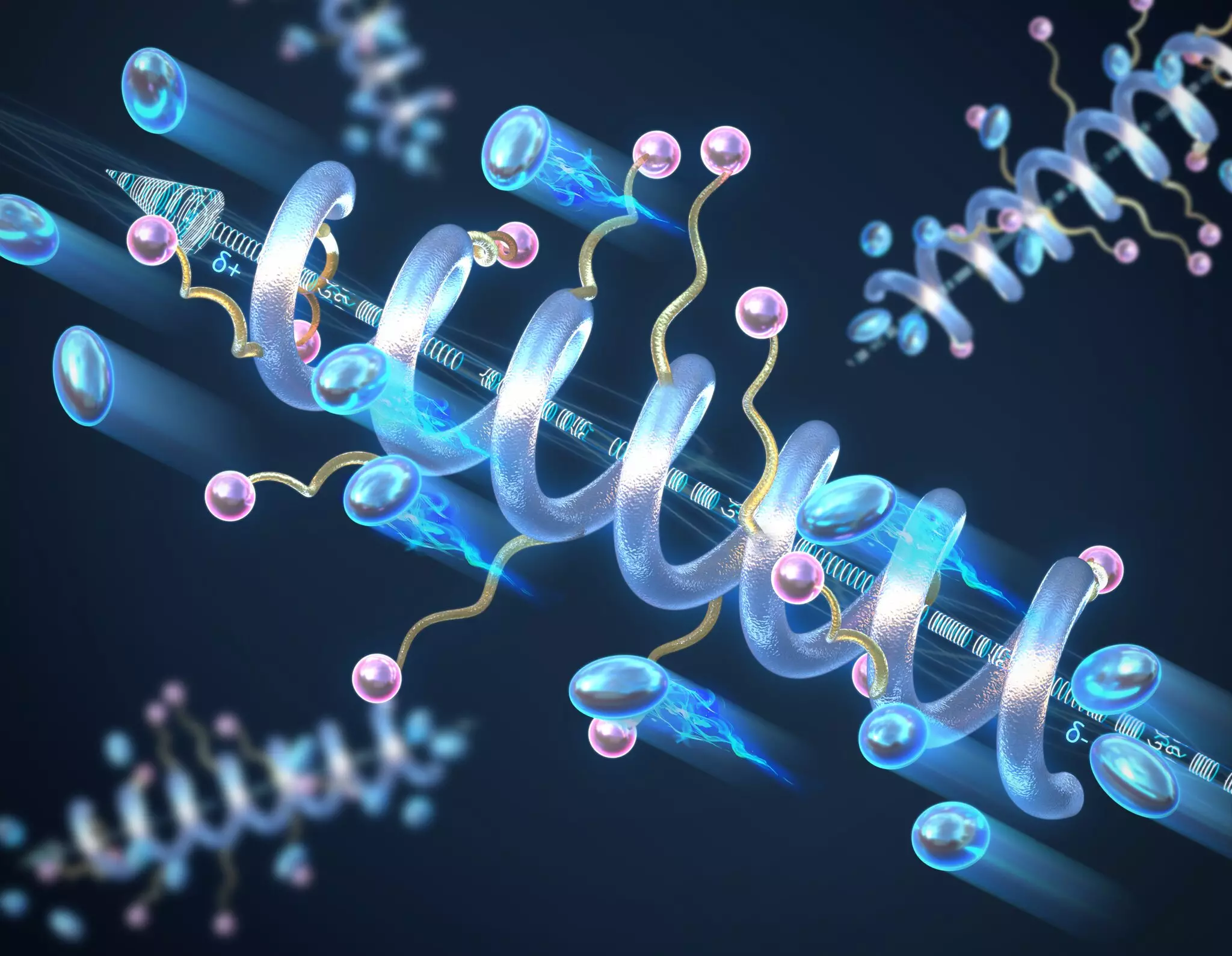The quest for more efficient and safer energy storage solutions has led research into solid-state electrolytes, a promising alternative to the conventional liquid electrolytes currently in widespread use. Traditional batteries rely on liquid solutions that facilitate ion movement, which can pose safety risks, such as leaks and flammability. In light of these challenges, scientists are seeking advanced solid-state materials that could enhance performance and safety. A recent study conducted by a team of researchers at the University of Illinois Urbana-Champaign sheds new light on how helical structures in peptide-based polymers can significantly improve the ionic conductivity and stability of solid-state electrolytes.
Ionic conductivity is a crucial parameter in the effectiveness of battery performance, determining how efficiently ions can travel through the electrolyte. Historically, solid polymer electrolytes faced hurdles in this area due to their random coil configurations, which limit the pathways available for ion mobility. The investigation into helical structures offers a transformative approach, enabling researchers to manipulate the molecular design of these polymers deliberately. By aligning the molecular chains to adopt a helical configuration, the research team found that they could amplify both the alignment and performance of the ions within the material.
A Breakthrough in Polymer Design
The study, titled “Helical peptide structure improves conductivity and stability of solid electrolytes,” published in the esteemed journal Nature Materials, represents a significant breakthrough in polymer science. Professor Chris Evans, who led the research, introduced the innovative concept of utilizing a helical secondary structure to optimize the ionic conductivity of solid materials. Unlike traditional polymers that tend to arrange themselves randomly, these helical peptides behave similarly to biological molecules like DNA, forming a more organized structure that enhances the flow of ions. Moreover, the researchers observed that longer helical fibers exhibited notably higher conductivity, suggesting a direct correlation between the polymer length and its ionic transport efficiency.
Stability and Environmental Advantages
Beyond enhancing conductivity, these helical structures offer additional advantages in their operational stability. The researchers noted that their helical peptide polymers maintain integrity under higher temperatures and voltage levels, which could lead to safer operating conditions in batteries. They reported no degradation or breakdown of the helix before the material reached its end of life, thus positioning these new polymers as reliable components in next-generation energy storage systems.
Another pivotal finding is the environmentally friendly nature of these materials. Composed of peptides, the helical polymers can be enzymatically or chemically degraded back into their original monomer units upon reaching the end of their functional life. This biodegradability allows for the recovery and recycling of materials, drastically reducing the environmental impact associated with battery disposal and manufacturing processes.
The incorporation of helical structures into polymer design for solid-state electrolytes has vast implications for the future of energy storage technologies. With the global push for sustainable and efficient alternatives to current battery systems, this research provides a promising avenue for developing safer, more efficient, and eco-friendly batteries. As innovations in material science continue to evolve, it is crucial to consider not only performance metrics but also the environmental footprint of these advanced materials.
As the demand for high-performance batteries escalates—driven by the growth of electric vehicles, renewable energy systems, and portable electronics—the opportunity to employ bio-inspired structures in engineering solutions appears increasingly viable. The work led by Professor Evans and his team at the University of Illinois Urbana-Champaign signifies a pivotal step forward, merging biological concepts with cutting-edge materials science to forge the path for the next generation of solid-state batteries that promise improved energy efficiency, safety, and sustainability.
The exploration of helical peptide polymers is indicative of a significant paradigm shift in the field of energy storage. With ongoing research and development, we may soon witness the realization of better-performing and ecologically responsible battery technologies that leverage the principles of biomimicry.


Leave a Reply